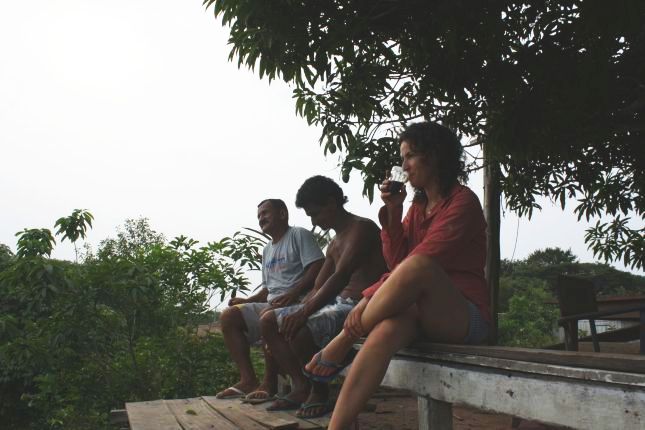
BR319 Day 5-7: RECOVERY – Amazonas, Brazil
San Sebastian do Igao Acu is a small village along the BR319, laying at the point where the road crosses the river Igapo Acu. Actually the road takes a steep dive into the river and comes up on the other side, and a ferry boat manages the crossing of vehicles and people. At any hour of day or night, a car / truck / motorbike might pull up at the river’s edge and hoot the horn, whereupon the ferry driver will come down and pilot them across.
There’s not much out here that meets the eye. A number of wooden houses, home to the around 40 families that live out here, some small boats, a ferry, a public phone booth…. that’s about it.
Our arrival at San Sebastian marks a big milestone in our BR319 adventure, because it means that we’ve covered the uninhabited 400 kilometre stretch of the road, which presented the main risk of the journey. From here onwards remain another 45 kilometres of dirt road before we’re back on asphalt. Although it’s still expected to be rough going, we’re at least in a somewhat populated area again where help may be at hand if we need it.
Following our four-day ordeal, we’ve decided to sit tight in this village for a little while and get some much needed rest and to mend and clean our equipment. Besides, we’re not likely to find ourselves in such a remote part of the Amazonas again any time soon, so we might as well spend some time taking it in and enjoying it.
Life out here proceeds at a distinctly slower pace. It’s hard to make out exactly what these people do and with out command of their language we’re not getting any the wiser at speed. People get their supplies from out-of-town deliveries. Somewhere further downriver there’s some local agriculture, and of course there’s fishing.
Every afternoon, or several times a day, people get together and sit under the shade of the large trees opposite the pousada and talk, think, rest. One chap breeds little river turtles in his home for later release into the river, an attempt to boost their declining population. Women go down to the river and wash clothing and kitchen-ware from atop little wooden rafts. Some folks go out on ‘crocodile patrol’ during the night, where they will shoot them to control the risk to people in the area.
We wash our stinking biking gear in the river too. At some point in the day, children gather down by the river and go for a swim. We join them – it’s great fun. They’re full of life and energy, somersaulting overboard from the tall car-ferry into the water.
One day I try out my hand at fishing without any success. A couple of the guys there are intrigued at how I’m going about it, with my hand line and bottle. One morning they take me up to one guy’s house and as we sit on the little veranda and sip on cachaca (cane spirit) and beer, we exchange information about how we go about fishing in our countries – knots, bait, etc. It’s nice to have a common subject to bond with.
The following day they offer to take us fishing in one of their boats, out on the river. Though we don’t catch anything, we have great fun and I learn that here in Brazil, a bit of cachaca seems to accompany just about every activity you can imagine.
On the second day in the village, two crews arrive in a number of 4x4s. The one is from the malaria control team, visiting here to check the entire population for exposure, as well as to deploy some toxins to control the mosquito population.
As it happens, because we’re here at this time, we also get tested for malaria. It’s quite efficient really, and we’re surprised. These folks come out regularly, and testing and extermination is completed within 48 hours.
The other people are a research team, they will continue deeper into the jungle to a remote research camp, where they will spend about a month gathering information about changes in the local biome. We spend some time talking to these people and they’re all very interesting. Everyone’s got their own area of expertise and everyone is excited to be involved. I would be! Spending time out here, doing work in one of the last natural frontiers unpolluted by mankind – that’s a privilege!
The days are hot and every afternoon and/or night there’s a strong rain shower. We read, swim, tend to our equipment. We go out to the jungle streams to get fresh water to drink. At night we eat and drink a few beers whilst we join everyone watching the current number one TV soap in Brazil, Salve Jorge. Half of it plays off in Turkey so it’s at least somewhat intriguing for Ebru and I as well. It’s all very rejuvenating.
We end up staying here 4 nights…
Some of the people here used to live in cities like Porto Velho, but decided to escape from the environments of population, crime and pollution. Now there is talk of the BR319 being re-paved to make Manaus accessible by road for the 2014 Football World Cup preparations, (Manaus is meant to host many of the matches).
We wonder how this will affect these people. We’ve spoken to a number of people about this subject before: some believe it will happen and others believe it’s only a rumour, as has been the case many times in the past, since it’s far too controversial.
We learn that some residents here would be in support of the road, seeing in it some benefits in commerce and access to the city – for example, for any serious medical issues, the next hospital is in Careiro, which is several hours by 4×4 under current conditions. They also don’t seem to be too concerned about a bridge replacing the ferry crossing, and the ferry captain would be able to re-employ his vessel somewhere further down stream.
We can only see a big concrete blemish on this tranquil scene and a noisy, dirty highway with careless motorists ploughing right through it. (Do they not see it??) In our judgement, rebuilding this road carries an unbelievable potential for destruction. The beauty about this whole area is its inaccessibility and (therefore) natural purity. Something like 28 natural and indigenous reserves inhabit the area we have journeyed through. We suspect that illegal logging and mining operations would be only too convenienced by this new road.
Even this aside, I can clearly imagine the scene in a few years time: a constant flow of automobile traffic between the south and Manaus. Trucks puffing out black soot on their journey to Sao Paulo. Beer cans, plastic bags and colourful sweet wrappers clinging to the brush on the road-side. A scattering of truck tyres remnants and empty engine oil canisters – perhaps the odd refrigerator or other rubbish dumped in a convenient cove. Flattened corpses of snakes, birds, lizards and other wild decorating the tarmac. Butterflies and other insects withdrawn deeper into the remaining wild, no longer fearless and inquisitive towards outside human visitors, population and body size declining, just as I’ve witnessed in so many places man has gone to settled. Petrol stations, shops, rest stations… the thought of it is too much to bear!
My firm opinion is that anyone currently wanting to visit this place needs to pay the price in sweat and tears to make the hard journey, and therefore appreciates it more for what it is. And this should remain so! I know I don’t live out here in these difficult conditions, but it’s clearly obvious what happens to these places when they become easily accessible to mankind – one excuse leads to another and the result is a tragedy and a crime – just look at the [horribly deforested] eastern side of the Amazon. I can guarantee oil and gold exploration will be on the agenda at some point.
On our journey over the past few days has shown us an absolute ruin of a road – in fact it can hardly be called a road for much of its extent. The only maintained part we saw was the section between Humaita and the Labrea-Manaus junction, which is about 20 kilometres, and it was graded dirt, not asphalt. The rest of route goes through such hostile terrain that it’d surely take years to rebuild it. There’s only a year before the world cup so we’re suspecting this road will not be built.
…FINGERS CROSSED!
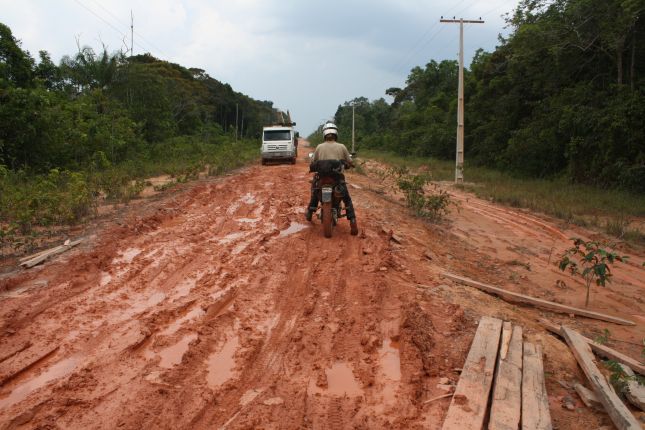
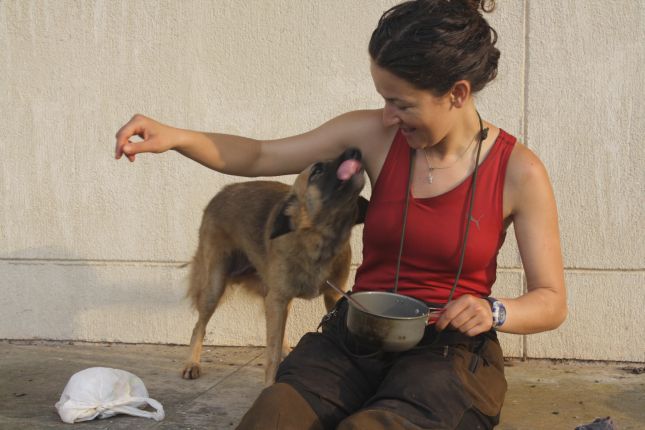
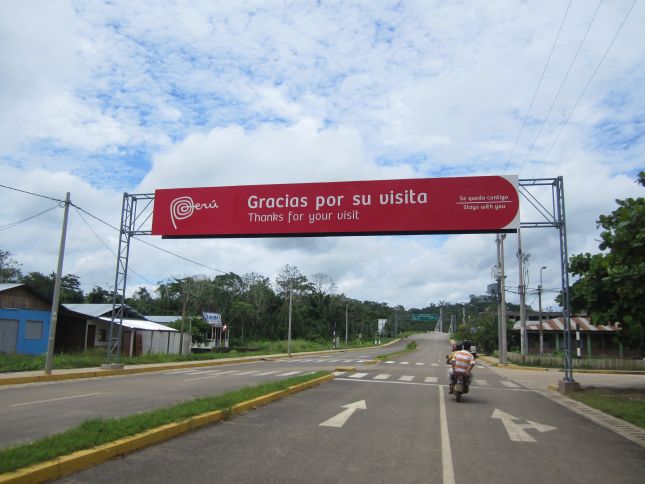
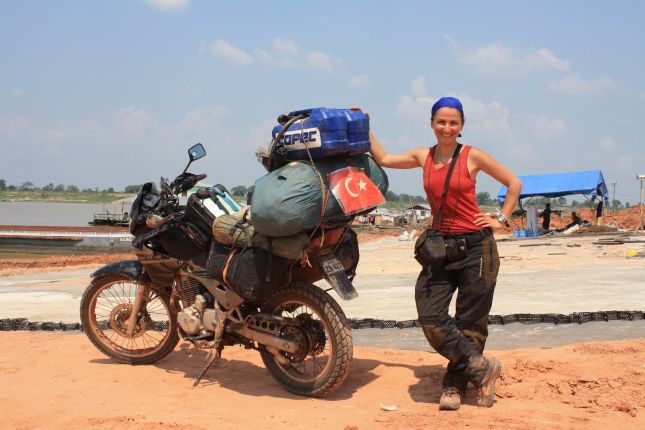
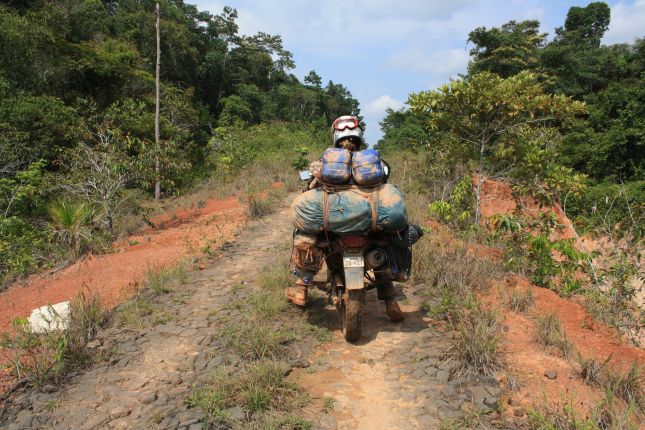
One Comment
Pingback: